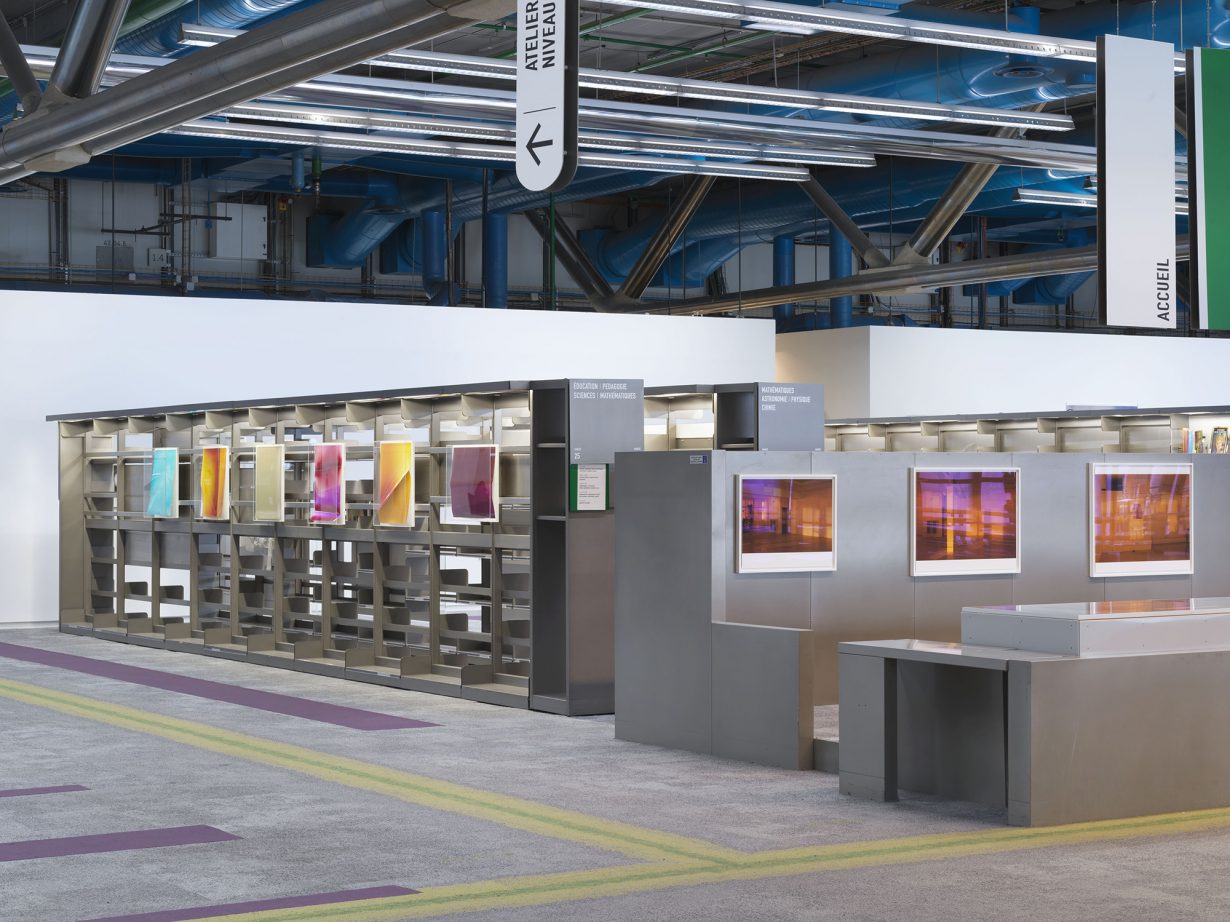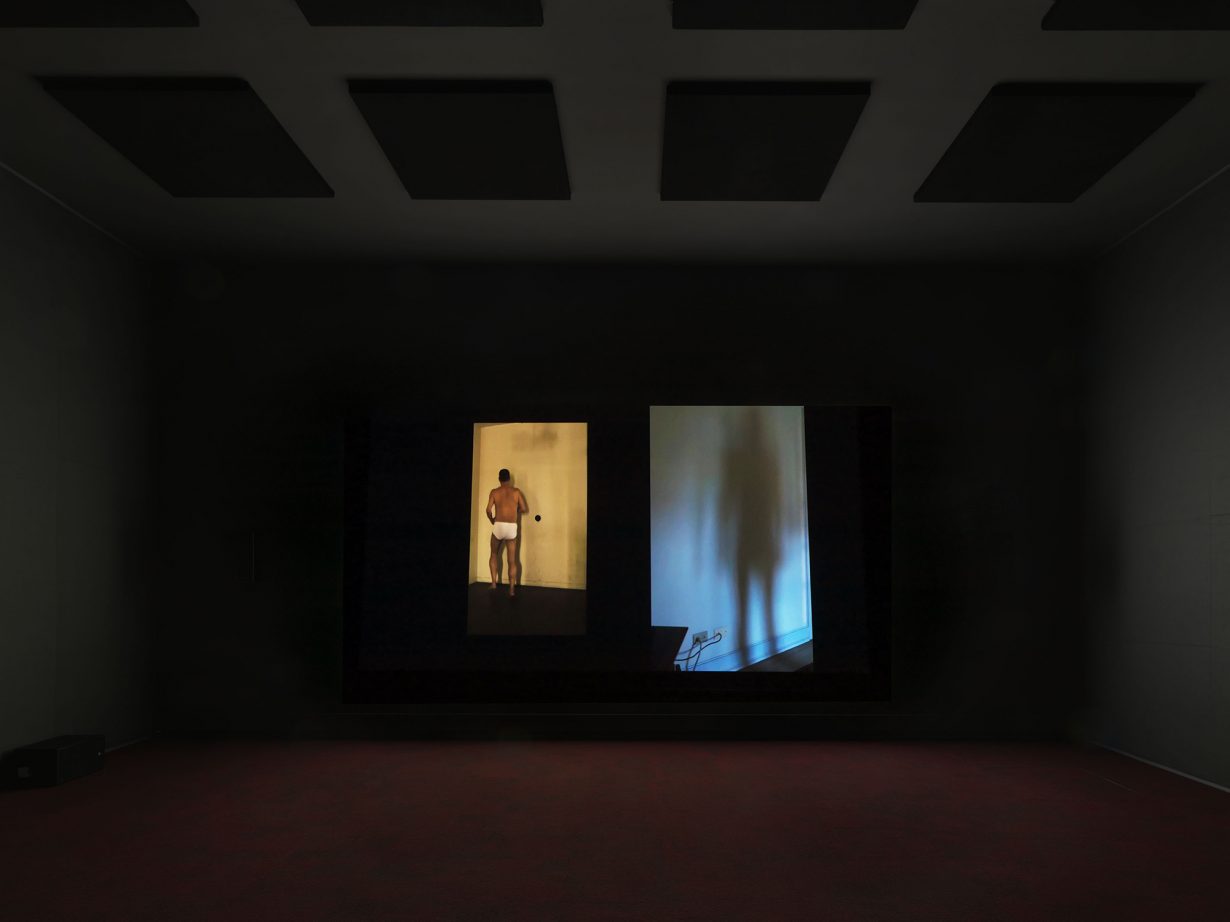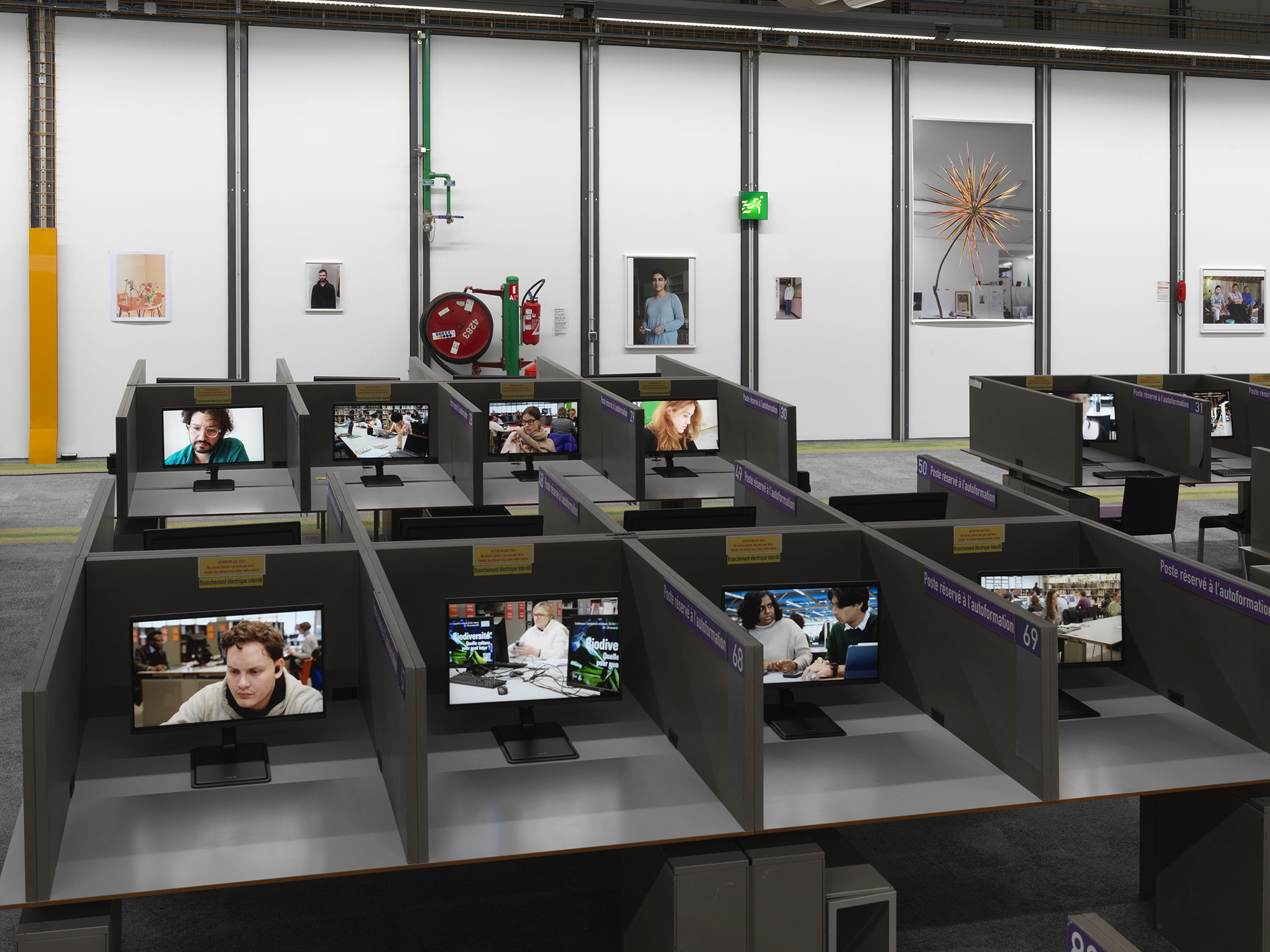The artist’s takeover of the Centre Pompidou library reads like a political gesture in itself – but toward what?
Earlier in June, in response to a complaint from the far-right Rassemblement National, the Paris region withdrew a €50,000 subsidy from Inter-LGBT, the organisation responsible for the capital’s Pride march. As the group rallied and raised funds from the community, the government then insisted that Eros – a far-right collective of self-dubbed ‘gay patriots’ – must be allowed to participate in the march, deploying some 50 police officers to ensure their ‘protection’.
In this charged context, Centre Pompidou’s invitation to Wolfgang Tillmans – renowned, among other things, for his tender and incisive images of gay nightlife – to take over one of Paris’s largest and most cherished public libraries reads like a political gesture in itself. It is also a poignant farewell, as the Pompidou Centre prepares for a five-year closure for renovations – especially for those of us who spent countless hours on its iconic 1980s carpets, quietly cramming for exams with fellow students or procrastinating in the cafeteria (now turned into the exhibition’s bookshop, though the coffee machine remains if you need a somewhat insipid boost).
This is a typical Tillmans exhibition: there is no chronology but instead one huge unfolding constellation of some 500 photographs ranging from the minuscule to the gigantic, casually pinned to the few walls built for the occasion in this large open-plan space, displayed in vitrines or framed and hanging from a few leftover metallic bookshelves. There’s also the atmospheric soundtrack, purpose-built projection rooms and computer stations playing his videoworks, as well as an extensive display of printed matter and a selection of recent works by fellow artists previously displayed at his Berlin project space, Between Bridges. Both an exercise in revisiting his own work and a response to the space, Nothing could have prepared us… is a kaleidoscopic view of nearly 40 years spent in pursuit of moments of beauty, coexistence and resistance in a neoliberal, technocapitalist world.

Even Tillmans virgins will quickly become familiar with his universe, with his favourite motifs and subjects recurring throughout the exhibition like waves: intimate shots of lovers, still lifes, exposed skin, starry night skies, data centres, the way information is shaped and circulated, friends getting older, Xerox machines, people, sublime nature, queer bodies, people communing (through a game of cards, a protest or a rave), reflections and shadows, landscapes on the verge of abstraction… Some images even reappear in different formats at different points in the exhibition – like in some giant memory game.
What feels new here is the sheer scale of the installation – exhibiting across 6,000 square metres of open-plan space is no small feat – and the particularly fruitful dialogue Tillmans stages between his work and the library. There’s the haunting presence of its readers, whom Tillmans recorded individually with fixed cameras as they studied on the last day before the library closed, and then conjured via a mosaic of portraits flickering across the screens of 60 computer stations. And there are the many formal resonances – big and small – with the Renzo Piano and Richard Rogers-designed structure: between the interplay of lines and shadows pictured, say, in his shot of the Mexico–US border (Empire (US/Mexico border), 2005) and the geometric designs of the carpet below; between the rounded shape of Moon in Earthlight (2015) and the library’s firehose reel hanging beside it; through the mirror-topped tables reflecting the Centre Pompidou’s signature blue ventilation pipes looming overhead, and placed sporadically among the vitrines displaying his prolific editorial work, from i-D to the queer quarterly Butt. Finally, in the show’s dimly lit final section, separated from the rest by a hanging piece of tarp, laser tracery glides slowly along the exposed pipes of the ceiling, as if scanning the building’s insides for posterity.

Everywhere, the photographic image is present and probed: Truth Study Centre (2005–), with its chaotic arrangements of photographs, news clippings and fragments of printed matter, asks how images (and the media) shape our sense of truth, questioning their role in the production and dissemination of (mis)information. His abstract, cameraless experiments – such as the Freischwimmer and Greifbar series (both 2003–) – meanwhile reflect on the very technology of photography, pushing analogue processes to their material limits and exploring how images are created, distorted and perceived.
In fact, there’s so many images in this library of freefloating images that after a while it can turn into a something of a glorified scrolling experience – albeit one on a very cool and well curated Instagram feed or Pinterest. Perhaps it’s a meta-comment on our passive consumption of images today, or perhaps it’s a strategy: to drown us in his soft, tender gaze, and encourage us to sit with the blurry, the uncertain, as a remedy to the dogmatic clarity of our polarised age. Ultimately, it’s a strategy that feels more potent than when Tillmans tries to tackle politics head-on: the display of protest images gathered on one bookshelf look dated, aside from one picture of a march in support of Ukraine – where are the anti-genocide marches for Gaza? – while his anti-Brexit and pro-Europe poster campaigns of 2016 can read as painfully naive in our fragmented present.
Is this enough in the face of resurgent fascism? Probably not on its own. But we still need this sensibility: one that holds on to complexity and care and refuses to give in to despair. As I write these lines, Paris’s Pride march has just taken place. It drew half a million people to the streets (at the same time thousands marched in defiance of Viktor Orbán’s Pride ban in Hungary). Perhaps there is hope after all – and perhaps that is precisely what Tillmans’s images are here to remind us.
Nothing could have prepared us – Everything could have prepared us at Bibliothèque Publique d’Information, Centre Pompidou, Paris, through 22 September
From the September 2025 issue of ArtReview – get your copy.
